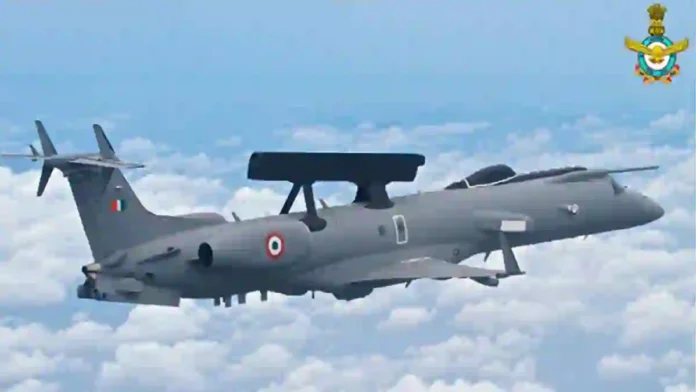India has taken a decisive step toward enhancing its air defence and battlefield situational awareness with the government’s clearance of the ₹20,000 crore NETRA MK-II project—an ambitious next-generation Airborne Warning and Control System (AWACS) initiative led by the Defence Research and Development Organisation (DRDO).
This significant undertaking will see six Airbus A321 aircraft, previously acquired from Air India, undergo extensive modifications in collaboration with Airbus and Indian private sector firms to serve as cutting-edge aerial surveillance platforms equipped with fully indigenous Active Electronically Scanned Array (AESA) radars.
Read- CRPF Seeks 20,000 New Troops From Union Home Ministry For Deployment In Kashmir, Manipur
The NETRA MK-II’s technological centrepiece is its indigenous AESA radar, to be installed in a prominent dorsal fin-like structure atop each aircraft. This configuration delivers true 360-degree coverage, enabling long-range detection, tracking, and identification of enemy aircraft, missiles, UAVs, and select ground assets—well beyond India’s borders.
Unlike older systems, the MK-II variant leverages state-of-the-art Gallium Nitride-based (GaN) AESA technology, significantly improving detection range and resistance to jamming. These platforms will act as airborne command centres, offering real-time battlefield data shareable with both fighter jets and ground stations through a comprehensive mission control suite, also indigenously developed by DRDO.
This marks the first Indian AWACS fleet based on the Airbus A321, breaking with the global norm where Boeing platforms have traditionally dominated similar roles. The project will complement and eventually surpass the capabilities offered by India’s current fleet, which includes the smaller Embraer-based Netra AEW&C aircraft (offering around 240-degree coverage and a range up to 375 km) and the much larger IL-76-based Phalcon AWACS (providing up to 400 km range and close to full spherical coverage).
Read- GRSE Launches Last of 8 Anti-Submarine Warfare Ships For Indian Navy
Read- Hindustan Aeronautics Limited has developed a special drone called CATS Warrior
The NETRA MK-II is designed to address technical and operational limitations of earlier systems, such as limited coverage duration and availability, ensuring the Indian Air Force (IAF) can conduct sustained surveillance and command operations.
The NETRA MK-II program also stands to bolster India’s defence manufacturing ecosystem, driving domestic expertise in high-end aviation electronics, complex system integration, and mission software development.
With DRDO and Indian industry playing central roles, the initiative will not only help close gaps with regional rivals—Pakistan, for example, already operates a larger fleet of Saab-2000 Erieye and Chinese ZDK03 Eagles—but also positions India as a credible exporter of indigenous airborne surveillance technologies in the future.
The project is targeted for completion within three years, coinciding with DRDO’s Advanced Multi-Role Combat Aircraft (AMCA) fifth-generation fighter program. The approval and imminent induction of NETRA MK-II signals India’s emergence among the select global powers capable of independently developing, producing, and operationalizing advanced airborne command and control platforms—substantially sharpening the nation’s ‘eye in the sky’ and reinforcing its ability to counter evolving aerial threats.
Agencies




